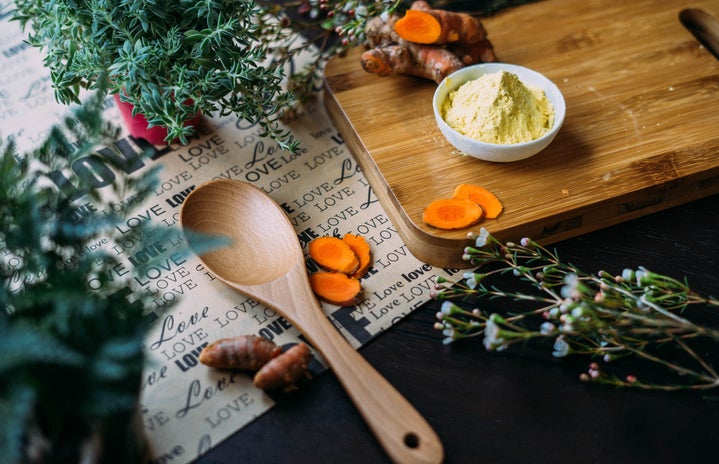Spain is a country of many flavors — and not just regarding food. With 17 autonomous regions and a handful of co-official languages, it’s a mesh of cultures both within and outside its borders. Within, Basque gastronomic societies, hearty Galician portions, Catalan customs, and Andalusian tapas traditions surround the quintessential food mecca in Madrid. Outside, its French neighbor across the Pyrenees Mountains, its Italian neighbor overseas, and its Arabic neighbor below the Iberian Peninsula lend Mediterranean tastes, ingredient influences and culinary styles to its already vivid food scene.
Whether ordered by requesting “una cerveza, por favor” at a bar or in the kitchen of world-renowned chef Ferran Adrià, the most well-known eating tradition in Spain is tapas. Although not always consumed in the same way, each diverse region of the country has a similar approach to the small dish.
But wait, what are tapas? The best way to explain tapas is to call them social snacks. In regions like Madrid, Granada and other southern cities, you’d typically walk into a restaurant, order a drink (usually a beer), and a complimentary plate would accompany it. Tapas can range from a sample serving of green olives, cheeses or meats to larger portions of tortilla (Spanish potato omelette), paella and stuffed croquettes. Like bar hopping, you can move from one spot to the next, trying a variety of tapas, or stick to one place and generally get better quality tapas with more drink orders.
Let’s try some! This particular recipe is an original creation inspired by a Basque-style dessert tapa I tried at a restaurant called Sagardi in the Gothic Quarter of Barcelona. Basque tapas are called pinxtos (pronounced peen-chose) in Euskara, the native tongue of northwestern Spain. The pinxto I tried was a toasted baguette slice, layered with mató y miel and walnut crumbs. Because Catalonia is adjacent to mountains and has cattle graze its lush land, mató y miel (ricotta-like cheese and honey) is a popular snack.
What you need:
For the base of the tapa:
- French baguette
- Extra virgin olive oil, as needed to coat bread
For the spread on the tapa:
- Jamón serrano
- Goat cheese
- Agave nectar
For the wine-poached fruit topping:
- 1 bottle red Spanish wine (Rioja)
- 2-3 pears
- 5-10 candied figs
- 2-4 tbs sugar, to taste
- 2 cinnamon sticks
For the garnish:
- 10-30 crushed walnuts
Tapas are usually easy to prepare. Although this particular recipe requires more cooking time and ingredients than traditional snacks from Spain, like the Catalan pan amb tomaquet (bread smothered with tomato guts and drizzled with olive oil), it is made up of a simple combination of ingredients. This entire recipe is made from a bread base, a cheese spread, a poached fruit topping and a nutty garnish.
1. The base: Preheat the oven to 400 degrees. While it is warming up, cut the baguette into slices no more than an inch thick. Place them on a baking sheet, and brush a few droplets of olive oil onto each slice, fully covering the side facing up. Once your oven is fired up and ready to go, pop the baking sheet in for about 10 minutes or until the slices are lightly browned. You want them to be crisp enough but still fluffy on the inside.
2. The spread: Gather your goat cheese, agave nectar and serrano ham. Squeeze as much agave into the cheese as you’d like for preferred sweetness and mix together until well-blended. With a knife or clean hands, cut or rip the ham slices into small shreds. Add to the cheese, and stir until evenly distributed.
3. The topping: To create the poached fruit glaze, put a large pot on medium-high heat on the stove. Add 1/4-inch layer of water to the pot, and immediately add about half the bottle of wine. Before the wine starts to bubble, chop up the pears into small cubes, and add them to the pot. Change the heat to low-medium after about five minutes to allow for slow absorption of the wine. Add in cinnamon sticks. Once the pears have a tinted hue, chop up the figs, and add them to the pot. When almost all of the wine has evaporated or been absorbed, which could take up to an hour on a low heat setting, add sugar, and stir well.
4. The garnish: Once the compote is ready and your bread is fresh out of the oven, it’s time to combine the elements. Slather the spread onto the base, glaze it with the poached fruit, and add a sprinkle of crushed walnuts to each piece.
Once your dish is ready to be served, use the leftover wine to pour a round of drinks that complement the sweetly savory tapa. Hopefully, this dish lets you experience a little taste of España. Enjoy, collegiettes™!


